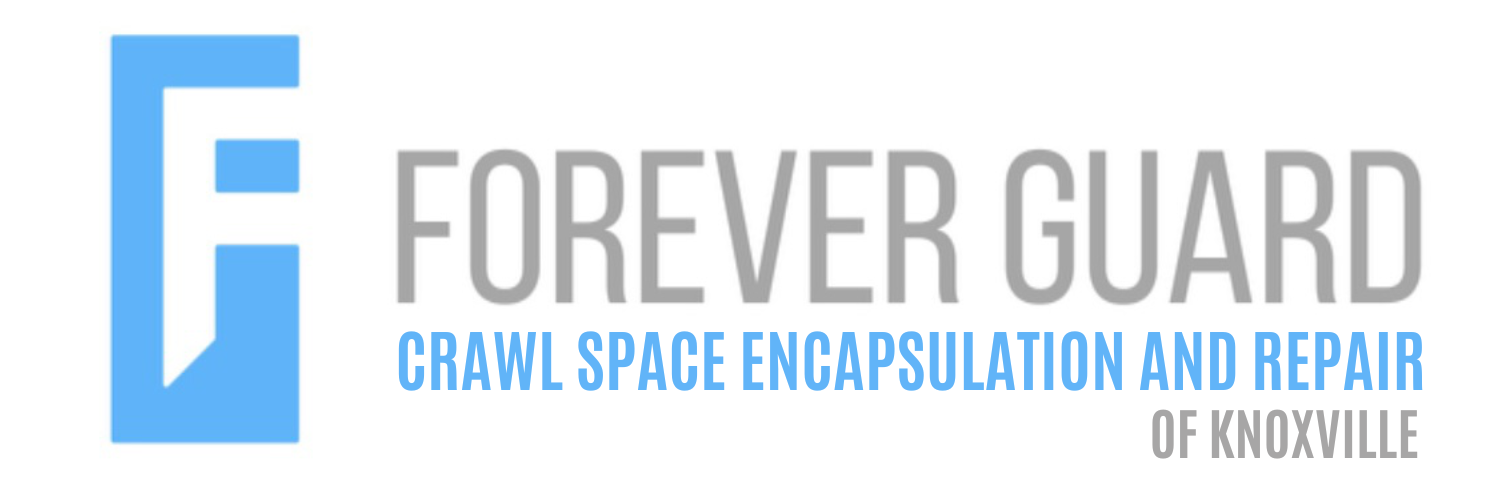Now IS THe Time To...

Crawl Space Services In Knoxville, TN
Stetson Howard: 865-432-6743
CRAWL SPACE ENCAPSULATION, REPAIR, WATERPROOFING & MOLD REMOVAL
No-Obligation, Free Inspections
No-Obligation Free Estimates
We Warranty All of Our Work
100% Satisfaction Guaranteed
In both urban and suburban settings, effective drainage is a critical yet often overlooked component of sustainable living. As cities expand and suburbs develop, the increase in impervious surfaces such as roads, driveways, and rooftops exacerbates stormwater runoff, leading to various drainage issues. These issues manifest as flooding, water pollution, and erosion, posing significant risks to property, infrastructure, and the environment. Traditional drainage systems often struggle to cope with the volume of runoff, necessitating innovative solutions to manage water more naturally and sustainably. This blog will explore the challenges posed by drainage in urban and suburban areas and introduce practical strategies, such as rain gardens, to mitigate these issues and promote a healthier, more resilient landscape.
Understanding Permeable Paving
Permeable paving is an innovative approach to managing stormwater and reducing runoff in urban and suburban environments. By allowing water to pass through the surface and into the ground, permeable paving materials help mitigate flooding, reduce water pollution, and replenish groundwater supplies.
What is Permeable Paving?
Definition of Permeable Paving:
Permeable paving refers to a variety of sustainable paving methods that enable water to infiltrate through the surface and percolate into the underlying soil. Unlike traditional impermeable surfaces, which cause water to runoff and potentially lead to drainage issues, permeable paving supports natural water cycles by allowing rainwater to seep into the ground.
Types of Permeable Paving Materials:
There are several types of permeable paving materials available, each with unique characteristics and applications:
- Porous Asphalt: This material has an open-graded surface with interconnected voids, allowing water to pass through easily. It is often used in parking lots and low-traffic areas.
- Pervious Concrete: Similar to regular concrete but with reduced fines in the mix, pervious concrete creates voids that let water permeate. It is suitable for driveways, walkways, and patios.
- Permeable Interlocking Pavers: These pavers are designed with spaces between them, filled with small stones or gravel, enabling water to infiltrate. They are commonly used in residential and commercial landscapes.
How Does Permeable Paving Work?
Explanation of the Permeability Mechanism:
The permeability mechanism of permeable paving involves water passing through the surface material and being absorbed into the ground. This process mimics the natural infiltration of rainwater, reducing surface runoff and minimizing the risk of flooding. The porous structure of the paving materials allows water to flow through, while the void spaces within the material store the water temporarily as it slowly infiltrates into the subsoil.
The Role of Underlying Layers and Soil in Filtration and Drainage:
The effectiveness of permeable paving depends not only on the surface material but also on the underlying layers and soil. Below the permeable surface, a base layer of crushed stone or gravel provides structural support and additional storage capacity for water. This layer helps to filter out debris and pollutants from the runoff, improving water quality as it infiltrates.
The subsoil beneath the base layer plays a crucial role in the overall drainage system. Ideally, the soil should have good drainage properties to facilitate the movement of water away from the surface. In cases where the natural soil is not well-draining, additional layers of gravel or sand can be added to enhance permeability and prevent waterlogging.
By understanding how permeable paving works and the importance of each component in the system, you can make informed decisions about implementing this sustainable solution in your landscape. Permeable paving not only addresses drainage issues but also contributes to the health and sustainability of urban and suburban environments.
Environmental Benefits
Permeable paving offers numerous environmental benefits that contribute to sustainable urban and suburban landscapes. By effectively managing stormwater, permeable paving systems can mitigate several common environmental issues.
Reduces Stormwater Runoff
Explanation of How Permeable Paving Helps in Absorbing Rainwater:
Permeable paving materials are designed to allow rainwater to infiltrate through the surface and into the ground below. Unlike traditional impervious surfaces, which cause water to run off and accumulate on the surface, permeable paving captures and absorbs rainwater. The porous structure of the materials, such as porous asphalt, pervious concrete, and permeable interlocking pavers, enables water to pass through and be stored temporarily in the sub-layers before gradually seeping into the soil.
Impact on Reducing the Burden on Stormwater Systems:
By absorbing rainwater, permeable paving significantly reduces the volume of runoff that flows into stormwater systems. This reduction alleviates the burden on municipal stormwater infrastructure, which often struggles to manage the increased runoff from urbanization. As a result, cities and towns can experience fewer overflows and reduced risk of infrastructure damage, ultimately leading to lower maintenance costs and improved system efficiency.
Prevents Flooding
How Permeable Paving Reduces Surface Water Accumulation:
Permeable paving helps prevent flooding by allowing rainwater to infiltrate the ground rather than pooling on the surface. This absorption process minimizes the formation of large puddles and reduces surface water accumulation. During heavy rainfall events, the permeable surfaces act as a buffer, slowing down the flow of water and giving it time to seep into the ground.
Examples of Urban Flooding Issues Mitigated by Permeable Solutions:
Urban areas with extensive impervious surfaces are particularly prone to flooding during storms. Implementing permeable paving solutions in parking lots, sidewalks, and streets has shown to be effective in mitigating these issues. For example, cities like Chicago and Portland have successfully incorporated permeable paving in various projects, resulting in noticeable reductions in localized flooding and improved stormwater management.
Improves Water Quality
Filtration of Pollutants Through the Layers of Permeable Paving:
As rainwater infiltrates through the layers of permeable paving, it undergoes natural filtration processes. The upper layers of the paving material trap sediments and larger particles, while the underlying gravel and soil layers filter out smaller pollutants such as heavy metals, oils, and chemicals. This filtration process helps to purify the water before it reaches the groundwater or nearby water bodies.
Contribution to Cleaner Groundwater and Surface Water Bodies:
The ability of permeable paving to filter pollutants contributes to cleaner groundwater and surface water bodies. By reducing the amount of contaminated runoff entering storm drains and natural waterways, permeable paving helps protect aquatic ecosystems and improve overall water quality. This is particularly important in urban areas where water pollution from runoff can have significant negative impacts on local rivers, lakes, and streams.
By understanding the environmental benefits of permeable paving, communities can make informed decisions about incorporating these sustainable solutions into their urban planning and development efforts. Permeable paving not only addresses immediate drainage and flooding concerns but also promotes long-term environmental health and sustainability.
Economic Benefits
Investing in permeable paving not only provides environmental advantages but also offers significant economic benefits. By understanding the cost-effectiveness and reduced maintenance needs, you can make an informed decision about incorporating permeable paving into your urban or suburban landscape.
Cost-Effective Over Time
Initial Installation Costs vs. Long-Term Savings:
While the initial installation costs of permeable paving may be higher compared to traditional impervious surfaces, the long-term savings make it a cost-effective solution. Permeable paving systems typically require a greater upfront investment in materials and installation techniques. However, these costs are offset by the significant savings achieved through reduced stormwater management expenses and the prolonged lifespan of the paving materials.
Reduced Need for Extensive Stormwater Management Systems:
One of the primary economic benefits of permeable paving is its ability to reduce the need for extensive stormwater management infrastructure. Traditional stormwater systems, such as large underground pipes and retention basins, are expensive to construct and maintain. By allowing water to infiltrate directly into the ground, permeable paving decreases the volume of runoff that needs to be managed, reducing the reliance on costly infrastructure. This translates into substantial savings for municipalities and property owners over time.
Decreases Maintenance Costs
Lower Maintenance Compared to Traditional Impervious Surfaces:
Permeable paving generally requires less maintenance than traditional impervious surfaces. Conventional pavement can crack, develop potholes, and suffer from surface wear due to water accumulation and freeze-thaw cycles. In contrast, the design of permeable paving allows water to drain away efficiently, reducing the risk of surface damage. Regular maintenance of permeable paving typically involves simple tasks such as removing debris and periodically replenishing the top layer of gravel or mulch, which are less costly and labor-intensive than the repairs needed for traditional pavements.
Long-Term Durability and Reduced Repair Costs:
The durability of permeable paving systems contributes to lower repair costs over their lifespan. The materials used, such as porous asphalt, pervious concrete, and permeable interlocking pavers, are designed to withstand various weather conditions and heavy usage without significant degradation. This long-term durability means fewer repairs and replacements are needed, further reducing maintenance expenses. Additionally, the natural filtration process through the permeable layers helps maintain the structural integrity of the pavement, preventing issues like erosion and undermining that can plague traditional systems.
By considering the economic benefits of permeable paving, including cost-effectiveness over time and decreased maintenance costs, you can appreciate its value as a sustainable and financially sound investment. Permeable paving not only addresses immediate drainage needs but also offers long-term economic advantages, making it an attractive option for urban and suburban developments.
Aesthetic and Functional Benefits
Permeable paving offers a range of aesthetic and functional benefits that enhance urban environments. By incorporating these sustainable solutions, cities and suburbs can improve their visual appeal and functionality.
Enhances Urban Aesthetics
Variety of Design Options with Permeable Pavers:
Permeable pavers come in a wide array of designs, colors, and materials, allowing for creative and visually appealing installations. Whether you prefer the classic look of brick, the sleek finish of concrete, or the natural feel of stone, permeable pavers can be customized to fit any aesthetic. These options enable architects and landscape designers to create unique patterns and textures that complement the surrounding environment, enhancing the overall beauty of urban and suburban spaces.
Integration with Green Spaces and Landscaping:
Permeable paving integrates seamlessly with green spaces and landscaping, creating a harmonious blend of hardscapes and softscapes. By incorporating permeable pavers into garden paths, patios, and plazas, you can create inviting and functional outdoor areas. The permeability of these surfaces allows for the growth of vegetation between the pavers, further enhancing the natural aesthetic. This integration not only beautifies the space but also promotes biodiversity and contributes to a healthier urban ecosystem.
Multifunctional Spaces
Use in Driveways, Walkways, Parking Lots, and Public Spaces:
Permeable paving is highly versatile and can be used in a variety of applications, including driveways, walkways, parking lots, and public spaces. Its ability to support vehicular and pedestrian traffic makes it an ideal choice for residential, commercial, and municipal projects. In driveways, permeable pavers provide a durable and attractive surface that reduces runoff. Walkways and pathways made from permeable materials offer safe and aesthetically pleasing routes for pedestrians. Parking lots with permeable surfaces help manage stormwater while providing functional parking spaces. In public spaces, permeable paving can be used to create plazas, courtyards, and other communal areas that are both beautiful and practical.
Benefits of Multifunctional Surfaces in Urban Planning:
Multifunctional permeable surfaces offer numerous benefits in urban planning. They help optimize land use by combining aesthetic appeal with practical functionality. These surfaces contribute to sustainable urban development by managing stormwater, reducing the urban heat island effect, and promoting groundwater recharge. Additionally, multifunctional permeable surfaces enhance the quality of life for residents by creating attractive, green, and usable outdoor spaces. They support active lifestyles by providing safe and pleasant areas for walking, cycling, and socializing.
By embracing the aesthetic and functional benefits of permeable paving, urban planners, architects, and homeowners can create vibrant, sustainable, and resilient communities. Permeable paving not only addresses environmental and economic concerns but also elevates the visual and practical aspects of urban and suburban landscapes.
Challenges and Considerations
While permeable paving offers numerous benefits, it is important to consider potential challenges and site-specific requirements to ensure successful implementation and long-term performance. This section addresses key considerations related to site suitability and maintenance requirements.
Site Suitability
Assessing Soil Type and Permeability:
Before installing permeable paving, it is crucial to assess the soil type and its permeability at the proposed site. Conduct a soil test to determine the drainage capabilities of the soil. Ideally, the underlying soil should have good permeability to allow water to infiltrate efficiently. Sandy or loamy soils are generally well-suited for permeable paving as they facilitate rapid drainage. In contrast, clayey soils, which tend to retain water and drain slowly, may require additional preparation, such as incorporating sand or gravel to improve permeability. Understanding the soil conditions helps in designing an effective permeable paving system that maximizes water infiltration and minimizes potential issues.
Ideal Conditions for the Installation of Permeable Paving:
Permeable paving works best in areas that experience moderate rainfall and have gentle slopes. Flat or gently sloping sites are ideal as they allow water to infiltrate uniformly across the surface. Steep slopes can cause runoff to bypass the permeable surface, reducing its effectiveness. Additionally, avoid installing permeable paving in areas prone to heavy sedimentation or contamination, as these can clog the pores and reduce permeability. Proper site assessment and preparation ensure that the permeable paving performs optimally and delivers the intended environmental benefits.
Maintenance Requirements
Regular Cleaning and Upkeep to Prevent Clogging:
To maintain the effectiveness of permeable paving, regular cleaning and upkeep are essential. Over time, debris, leaves, and sediment can accumulate on the surface and clog the pores, reducing permeability. Regularly sweeping or blowing off debris helps keep the surface clean. For more thorough maintenance, power washing can be used to remove stubborn dirt and sediments. In areas with heavy traffic or vegetation, more frequent maintenance may be required to ensure the paving remains functional. Preventing clogging is crucial for maintaining the drainage capabilities of the permeable paving system.
Ensuring Longevity and Efficiency of Permeable Surfaces:
Ensuring the longevity and efficiency of permeable paving involves more than just surface cleaning. Periodically inspect the paving for signs of wear, damage, or clogging. Address any issues promptly to prevent further deterioration. Additionally, the underlying layers, such as the gravel base, should be checked to ensure they are not compacted or clogged. If necessary, replace or rejuvenate the gravel to restore permeability. Proper maintenance extends the lifespan of the permeable paving and ensures it continues to provide effective stormwater management. Implementing a regular maintenance schedule helps keep the permeable paving system in top condition, delivering long-term environmental and economic benefits.
By considering site suitability and adhering to maintenance requirements, you can overcome the challenges associated with permeable paving and ensure its successful implementation. Proper assessment and regular upkeep are key to maximizing the performance and benefits of permeable paving, making it a sustainable and efficient solution for urban and suburban drainage issues.
FAQs
-
What is permeable paving?
Permeable paving is a type of sustainable paving that allows rainwater to infiltrate through the surface into the ground, reducing runoff and managing stormwater.
-
How does it reduce runoff?
Permeable paving absorbs rainwater, reducing surface runoff and alleviating pressure on stormwater systems.
-
Does it prevent flooding?
Yes, permeable paving reduces surface water accumulation, helping to prevent flooding in urban and suburban areas.
-
How does it improve water quality?
Permeable paving filters pollutants through its layers, contributing to cleaner groundwater and surface water bodies.
-
Is it cost-effective?
Yes, permeable paving is cost-effective over time, reducing the need for extensive stormwater management systems and lowering maintenance costs.
Recent Blog Posts
Crawl Space News



Schedule Your FREE Crawl Space Evaluation!
Did you know YOU DON'T HAVE TO BE HOME for us to provide you with your 100% FREE crawl space inspection and report?
Call Us Today at: 865-432-6743
Forever Guard Crawl Space Encapsulation and Repair of Knoxville is a specialty crawl space waterproofing company that services the greater Knoxville, TN and surrounding areas.
Business Hours
Sunday: 7:00 AM - 7:00 PM
Monday: 7:00 AM - 7:00 PM
Tuesday: 7:00 AM - 7:00 PM
Wednesday: 7:00 AM - 7:00 PM
Thursday: 7:00 AM - 7:00 PM
Friday: 7:00 AM - 7:00 PM
Saturday: 7:00 AM - 7:00 PM
legal info
All Rights Reserved | Forever Guard Crawl Space Encapsulation and Repair of Knoxville




